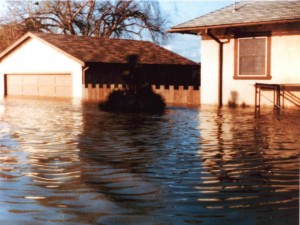SACRAMENTO, Calif. (AP) — As California endures one of its driest winters, on record, some state water managers are focused on the opposite end of the precipitation spectrum — the one in five residents who live in regions susceptible to catastrophic flooding.

More than $575 billion in development and $7 billion in farm output rests on or around floodplains, according to a joint state-federal report released Tuesday to sound a warning.
The price tag for capital improvements that would be needed to protect the state's infrastructure from potential devastation could top $100 billion, the report warns, which is 10 times more than exists in funding from bond measures and other sources to shore up aging levies and dams.
Already 800 flood projects have been identified.
"We realized that even those projects will not even provide the basic level of flood protection from 100-year and 500-year floods statewide," said Terri Wegener, manager of the Department of Water Resources statewide flood management program.